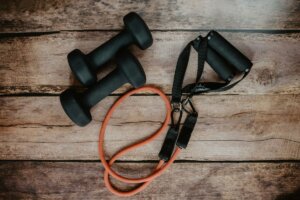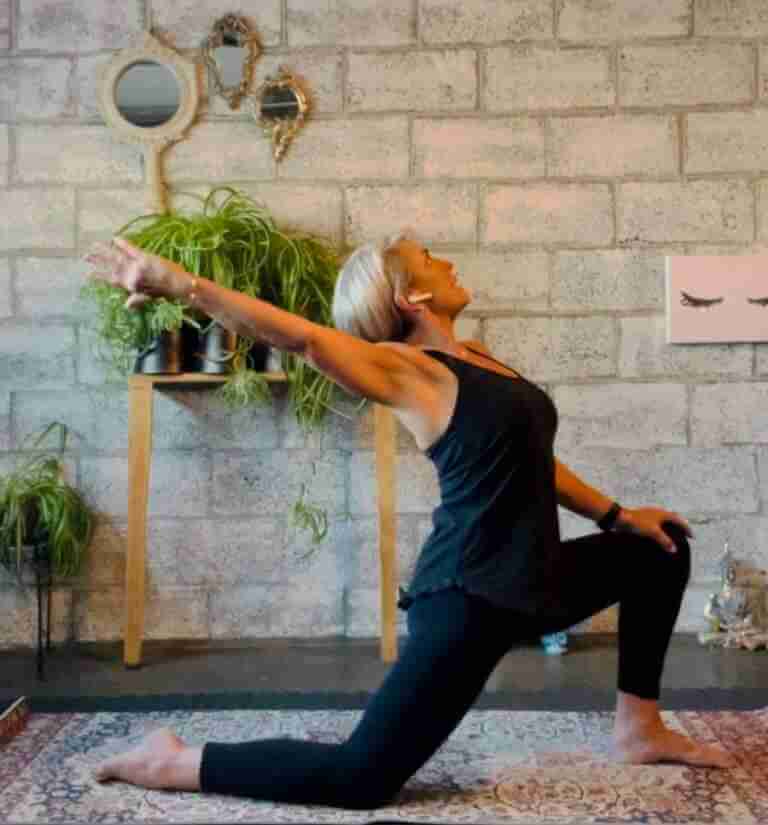
7 Guidelines for Building a Home Gym in Your Apartment
We all know that exercise is important to living a healthy life but finding the time and money to go to the gym can be
Asana at Home Online Yoga
Asana at Home Online Yoga
Kechari Mudra Exercises, (khecarī mudrā) often revered as the “King of All Mudras,” is a highly advanced practice in Raja Yoga and Hatha Yoga Practice is described in sacred texts such as the Hatha Yoga Pradipika and Gheranda Samhita.
The practice involves a tongue lock mudra, where the tongue is rolled back and placed into the nasal cavity.
The ultimate goal of Kechari Mudra is to attain higher states of consciousness, stimulate the higher chakras and regulate the flow of prana, or life energy, in the physical body. This blog will delve into the exercises and the intricacies involved in this great art of Kechari Mudra.
Kechari Mudra originates from the Sanskrit words (khecarī mudrā), meaning “roaming through the ether.” Also known as Khecari Mudra in different texts.
This mudra involves folding the tongue back so that the tip of the tongue goes beyond the soft palate and enters the nasal passages. The tongue takes the shape of a cactus leaf during the practice.
The ultimate, complete form of the practice is when the tongue reaches the nasal cavity – a point where yogic texts claim the divine life current draws the yogi into higher consciousness.
Before commencing with Kechari Mudra exercises (khecarī mudrā), one should be well-versed in basic meditation techniques and yoga mudras like Jalandhara Bandha, Mula Bandha, Uddiyana Bandha, Shambhavi Mudra, and Ujjayi Pranayama.
Sitting in a comfortable position and ensuring breath control with deep breathing exercises is essential. Swami Sivananda and Swami Kriyananda, among other great yogis, emphasize the importance of having the right attitude and complete devotion in practice.
It is crucial to prepare the tongue for this yoga mudra gradually. Talabya Kriya, or the tongue-palate exercise, is essential in making the tongue more flexible.
Practitioners advise that the lower tendon of the tongue be cut little by little over years of practice to achieve long tongues. Kechari Mudra Exercises is a very complex subject, and thus seek a knowledgeable teacher’s guidance.

Kechari Mudra (khecarī mudrā) affects a whole host of physiological processes. It activates the pituitary gland and stimulates the third eye chakra. The practice can also lower the heart rate, breathing rate, and blood pressure by stimulating the parasympathetic nervous system.
The practice of Kriya Yoga and Khechari Mudra Exercises, as taught by Paramhansa Yogananda and Swami Vivekananda, is associated with numerous benefits.
The junction point it touches is one of the most ecstatically sensitive organs, where the current flows most powerfully. This khecarī mudrā allows the practitioner to experience the bliss of nectar and connect with spiritual energies.
Kechari Mudra (khecarī mudrā) is a highly advanced practice and thus approached with respect and caution. Experienced yogis recommend learning it under the guidance of an experienced teacher. In ancient times, Lord Shiva transferred this knowledge to a select few, signifying its sacredness and complexity.
Practicing Kechari Mudra with the great art of visual Khechari Mudra (focusing on the third eye) can yield even more profound experiences. The Hatha Yoga Pradipika states that Khechari Mudra is the “King of all Gestures.” However, one should be patient as achieving full practice can take years of dedicated effort.
The wisdom of the Gheranda Samhita yogis, Swami Sivananda, and others has emphasized that the combination of Kechari Mudra with Maha Mudra, Maha Bandha, and Maha Vedha creates a powerful synergy for the aspirant seeking spiritual enlightenment.
While the ancient yogic texts primarily discuss the spiritual aspects of Kechari Mudra, modern science has shed light on its physiological implications.
The area at the roof of the mouth and the nasal cavity, which the tongue touches during Kechari Mudra, is densely packed with nerve endings. This region acts as a neural junction point, connecting various brain parts.
By stimulating these nerve endings, the (khecarī mudrā) mudra can affect the neural circuits, possibly explaining some of the heightened states of awareness described by practitioners.
When the tongue rolls back to touch the nasal cavity, it gets close to the pituitary gland, often called the “master gland.” This gland controls several hormonal functions in the body.
Some practitioners assert that the pressure exerted near this region during Kechari Mudra stimulates the pituitary gland, balancing hormonal functions and contributing to physical and mental well-being.
Kechari Mudra, though powerful, is just one aspect of extensive yogic practice. For holistic development, try integrating the Kechari Mudra Exercises into a broader regimen that includes Asanas (physical postures), Pranayama (breath control), Dharana (concentration), and Dhyana (meditation).
Engaging in Ujjayi Pranayama for deep breathing and incorporating bandhas such as Mula Bandha and Jalandhara Bandha can amplify the effects of Kechari Mudra.
One of the critical aspects that can enhance the Kechari Mudra practice is the proper application of bandhas. Mula Bandha involves contracting the muscles at the base of the spine, which helps in channelling the life energy upwards.
Jalandhara Bandha, which consists in tucking the chin close to the chest, supports the tongue reaching further back into the nasal cavity during Kechari Mudra Exercises. The combination of these bandhas creates an energy circuit, facilitating the flow of prana through higher chakras.
To practice Kechari Mudra Exercise effectively, adopting a sattvic (pure) diet and lifestyle is essential. A light and predominantly plant-based diet can make the body more conducive to energy flow.
Avoiding intoxicants and excessive stimulation is also crucial, as it can help attain the calmness and focus required for such advanced practices.
There are historical anecdotes of great yogis who practiced Kechari Mudra. Swami Vivekananda, a disciple of Ramakrishna Paramahansa, was an ardent practitioner of Raja Yoga and is believed to have practiced Kechari Mudra. His eloquence and ability to enter deep meditative states came from his intense yogic practices.
Swami Sivananda, a renowned great yogi and spiritual teacher, observed that Kechari Mudra leads to a state where the practitioner transcends hunger, thirst, and the fear of death. He considered this mudra to be instrumental in moving towards the ultimate goal of yoga – self-realization and union with the divine.
Kechari Mudra is not easy to master and poses its own set of challenges. The flexibility and length of the tongue vary among individuals.
For some, it may take a considerably long time and consistent practice to achieve the desired state of the mudra. It is also essential to be cautious to avoid injury. The slow and gradual stretching of the tongue is critical.
For those who find it difficult to reach the nasal cavity, practicing Nabho Mudra, where the tongue touches the roof of the mouth, can be a good starting point.
This variant is less intense and can still provide benefits. Gradually, as the tongue becomes more flexible, one can attempt to go deeper into Kechari Mudra.
Practitioners of Kechari Mudra Exercises often describe experiencing an elevation in their level of consciousness. This may manifest as heightened intuition, mental clarity, and deep inner peace. Some even report mystical experiences, such as visions or a sense of unity with the universe.
Kechari Mudra is known to deepen meditative practices. Reducing the distractions of the mind and allowing for a greater concentration of mental energy can help achieve deeper states of meditation. This is particularly useful for those who practice meditation for spiritual growth.
Often mentioned in ancient texts, the practice of Kechari Mudra Exercises can lead to the development of siddhis or yogic powers. These may include clairvoyance, heightened sensory perceptions, or control over natural elements.
However, many spiritual teachers caution against becoming attached to or excessively focused on these phenomena. The ultimate goal of yogic practices, including Kechari Mudra, is self-realization and spiritual enlightenment rather than attaining supernatural powers.
Being part of a community or having a support system is essential, especially for those dedicated to such an advanced yogic practice.
Contacting experienced practitioners or a guru can provide valuable insights and guidance. Additionally, sharing experiences with fellow Kechari Mudra Exercise practitioners can be enriching and inspiring.
Kechari Mudra or khecarī mudrā, revered as the “King of All Mudras,” can transform the physical body and the core of a human being’s existential experience. Its rich history, the deep science, and the profound psychological and spiritual impacts it harbours make it an unparalleled tool in a seeker’s arsenal.
The path of Kechari Mudra is undoubtedly strewn with challenges and demands a great deal of dedication, patience, and guidance. However, for those who walk this path with perseverance and an unwavering focus on the ultimate goal of self-realization, it promises to be a journey like no other.
As with any spiritual practice, the right intention, humility, and a genuine yearning for growth are essential. Kechari Mudra is not just a physical exercise; it is a confluence of body, mind, and spirit – a symphony that has the potential to lift the human experience to planes beyond ordinary perception.
For the sincere aspirant, Kechari Mudra Exercises is not just a practice; it is a transcendental voyage into the very heart of existence.
Source https://en.wikipedia.org/wiki/Khecar%C4%AB_mudr%C4%81

We all know that exercise is important to living a healthy life but finding the time and money to go to the gym can be

I used to think that yoga was only done by young people with lean muscular body types However that couldn t be further from the

Nestled in the heart of the desert Joshua Tree and its mystical landscape stand as a beacon for those seeking wellness and spiritual rejuvenation Renowned
